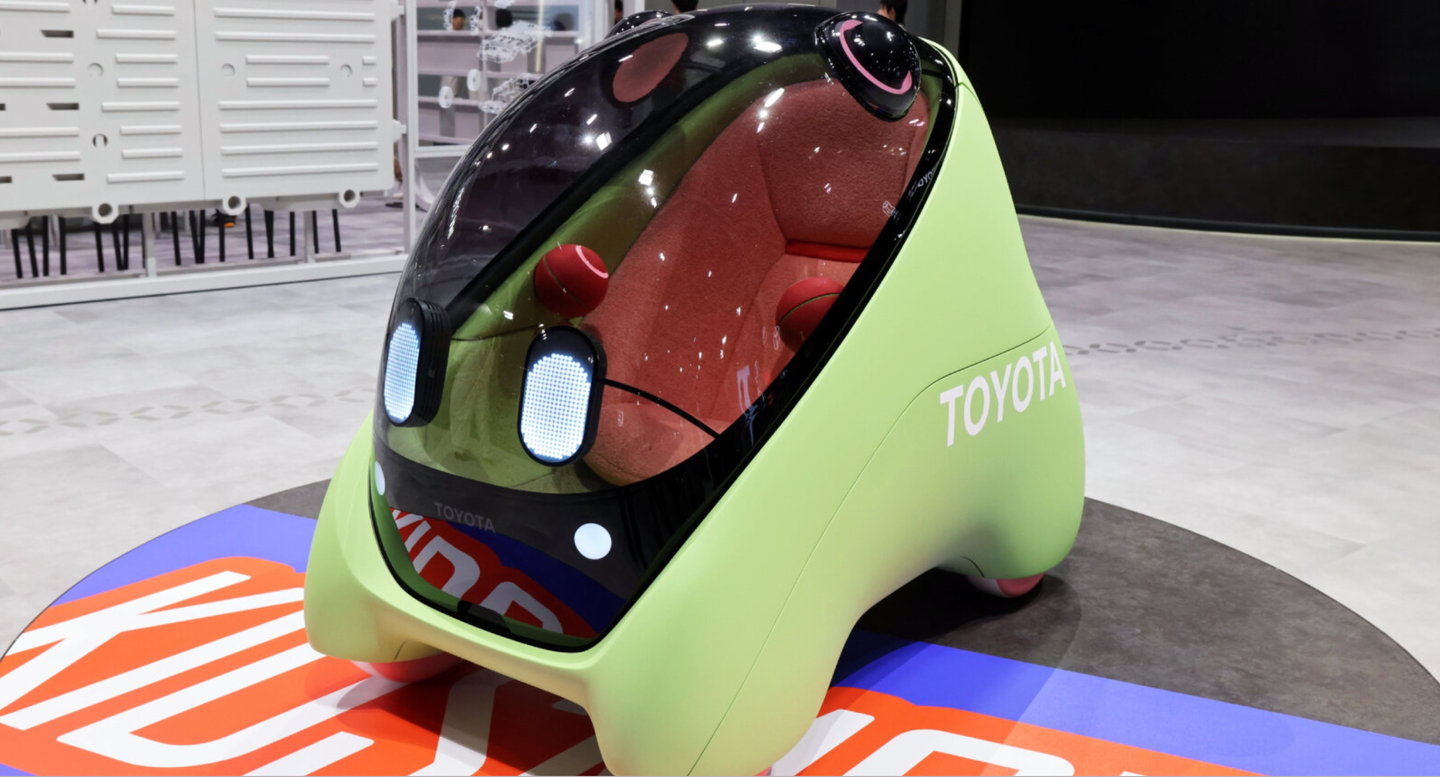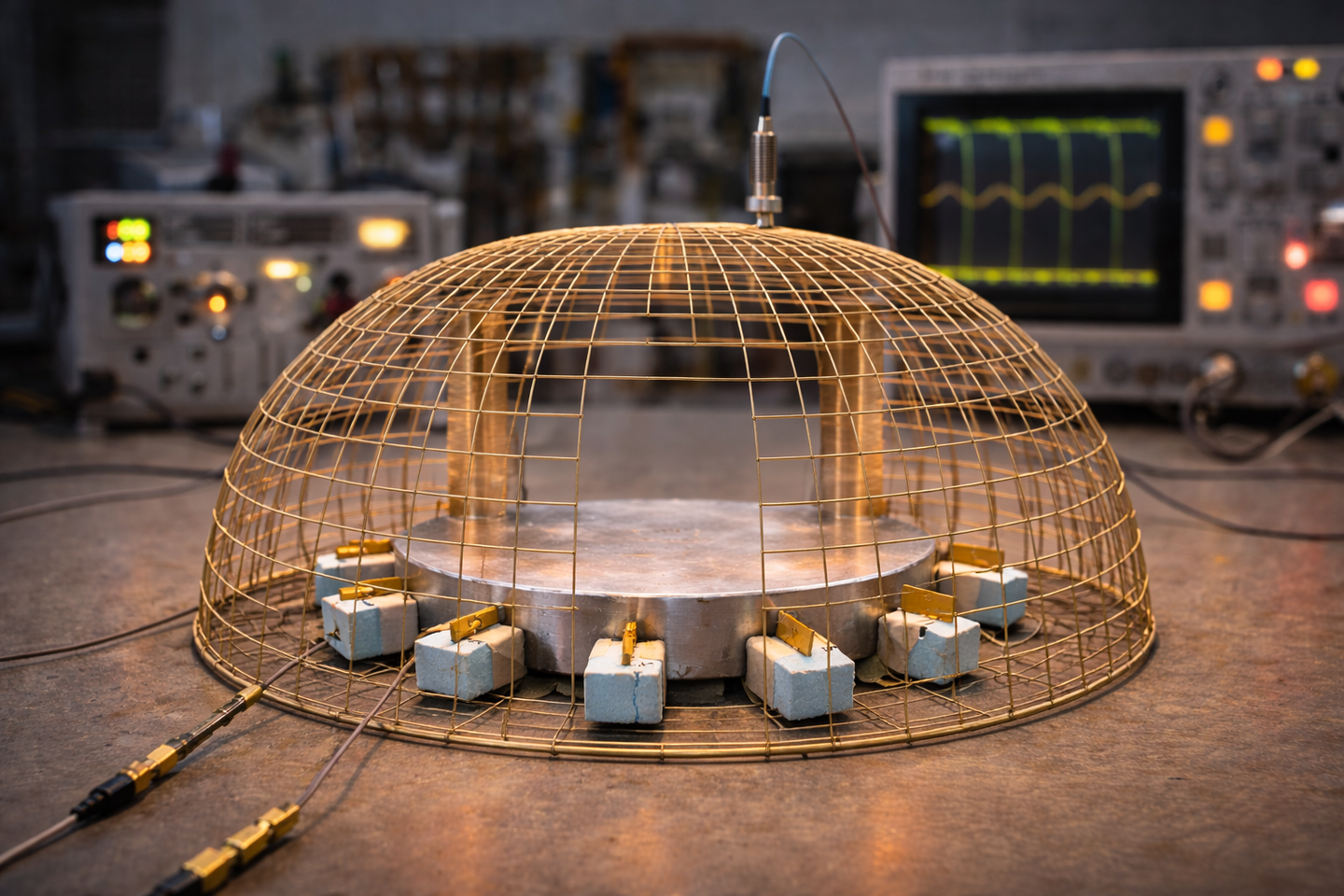Toyota’s self-driving EV bubble car for kids turns heads in Japan
Toyota’s Mobi, a playful self-driving pod for children, invites families to picture a future where young riders travel safely without adult supervision.

 Edited By: Joseph Shavit
Edited By: Joseph Shavit

Toyota’s Mobi debuts as a child-safe autonomous pod offering new possibilities for independent travel and AI-guided mobility. (CREDIT: Toyota / CC BY-SA 4.0)
Parents understand the feeling in their gut when a child asks for greater independence. You want a child to grow and experience things on their own, but the thought of letting them leave your supervision (even somewhere near the home) still worries you.
At the Japan Mobility Show 2025, Toyota tapped right into that feeling to showcase a small, glowing pod that offers something truly bold: safe, independent travel for children without an adult in the seat beside them.
The Vehicle for Young Travelers
The vehicle, called Mobi, looks like a tiny spacecraft, due to its rounded shape, friendly, smooth surfaces, and bright colors. A canopy door extends upwards for children to enter it comfortably. Once the child enters the pod, they are greeted with a thick, soft, fuzzy seat that provides a comforting feel and allows the child to feel safe. Only one person rides in the cabin, which makes the area feel less intimidating.
The vision of Mobi grew from Toyota’s ”Mobility for All” vision. Austin-based Toyota wants to continue developing vehicles for people of all ages and abilities. This invention is a major step forward in that vision.
Rather than thinking of mobility as an idea that begins when children reach their teenage years, Toyota wants families to envision the thought of safe mobility far earlier than that.
AI in the Driver's Seat
Mobi is not intended as a tool to teach children to drive. Instead, Mobi takes the wheel and drives in their place. Sensors and cameras surround the exterior of the pod to detect movement, traffic, and other nearby objects. Artificial intelligence manages the direction, speed, and optimal route to take. The system reacts to the world around the pod while children observe, ride, and listen.
Another feature built into the vehicle is an assistant dubbed UX Friend, which acts as the child's companion and talks throughout the trip. It provides gentle instructions, answers questions, and offers a sense of company. Toyota believes that the assistant helps children stay calm and focused and reassures them that Mobi is responding to its surroundings. "Even kids want a sidekick that looks like an adult car," Toyota Japan said during the presentation.
How Children Experience the Ride
Once settled into the pod, the outside world feels so much quieter. The fuzzy seat and generous interior space make the cabin feel familiar, even ceiling-high to the rider, like their very own small room. Children are safely strapped into position by a parent, the canopy deployed, and the conversation is redirected from the outside world to the soft-spoken voice of the digital companion seated nearby.
Toyota's team formed most of the interior around feelings; they sought to provide children with comfort instead of anxiety, excitement instead of fear. Mobi's blinking LED "eyes" on the front of the vehicle contribute to this goal, giving the pod a playful personality, making it seem more like a buddy than a machine.
What We Still Don’t Know
Toyota has provided only generalized details regarding the vehicle's structure and materials. The vehicle's skin will likely be made from a lightweight plastic or composite layered materials. Its small size helps it be more visible in traffic and easier for the AI system to react. The two roof sensors resembling "ears" help the AI system collect environmental evidence in real time.
Toyota does not have public performance metrics, battery range, or safety ratings yet. It has also not announced a public timeline for road-testing the prototype with real children as passengers. Taking that next step will require regulatory approval and new liability rules, especially regarding the risks of placing an unsupervised minor in an autonomous vehicle.
A Future Still Taking Shape
The idea of a child riding alone in a self-driving pod sparks both wonder and worry. Families see the appeal: a safe way to send a child to school, to a friend’s house or to after-school activities without rearranging work schedules or relying on carpools. At the same time, the thought of a young rider in a vehicle without an adult raises large questions about safety standards and legal responsibility.
For now, Mobi is a bright, curious prototype. It sits at the center of the show not because it is ready for the road, but because it dares people to imagine a future where independence arrives earlier and safety comes from code, sensors and design rather than an adult in the passenger seat.
Related Stories
- Major battery innovation pushes electric vehicle range to over 3,000 miles
- Electric vehicles get major boost from new ultra-powerful lightweight battery
- Experimental electric vehicle shatters world record - goes 0 to 60 in less than a second
Like these kind of feel good stories? Get The Brighter Side of News' newsletter.
Rebecca Shavit
Science & Technology Journalist | Innovation Storyteller
Based in Los Angeles, Rebecca Shavit is a dedicated science and technology journalist who writes for The Brighter Side of News, an online publication committed to highlighting positive and transformative stories from around the world. With a passion for uncovering groundbreaking discoveries and innovations, she brings to light the scientific advancements shaping a better future. Her reporting spans a wide range of topics, from cutting-edge medical breakthroughs and artificial intelligence to green technology and space exploration. With a keen ability to translate complex concepts into engaging and accessible stories, she makes science and innovation relatable to a broad audience.



